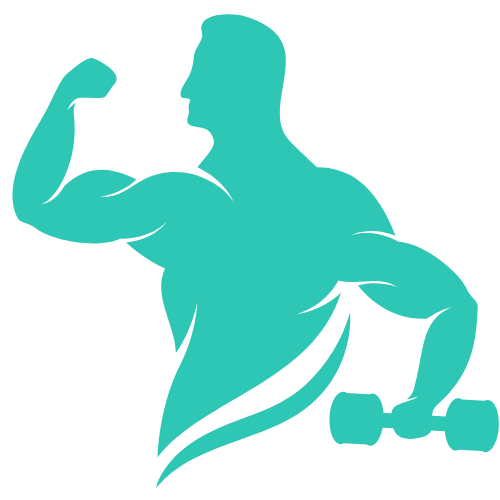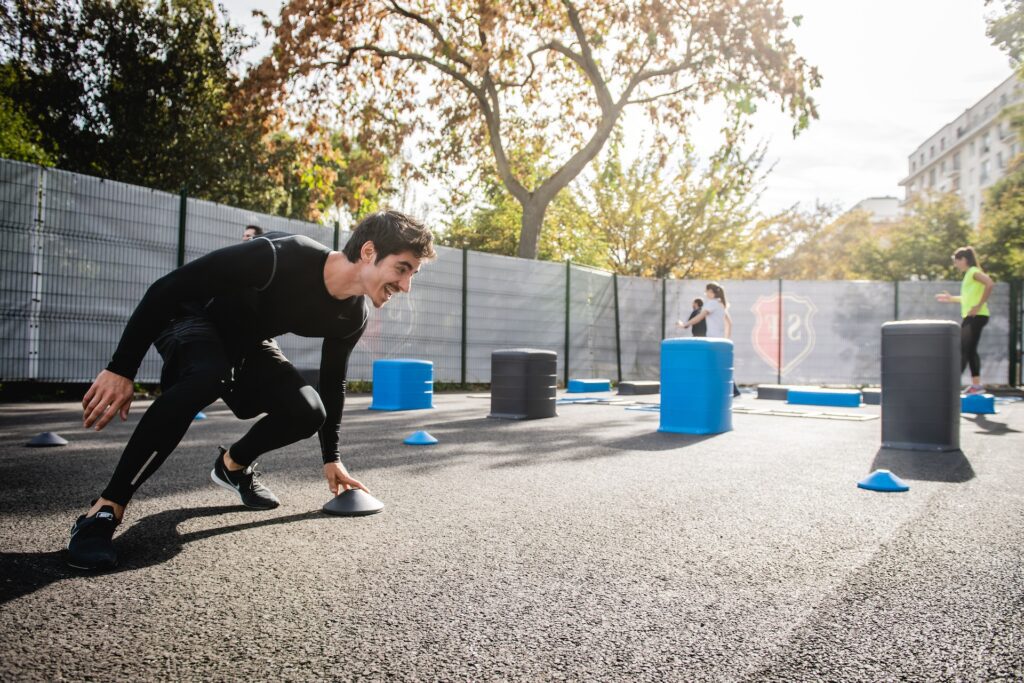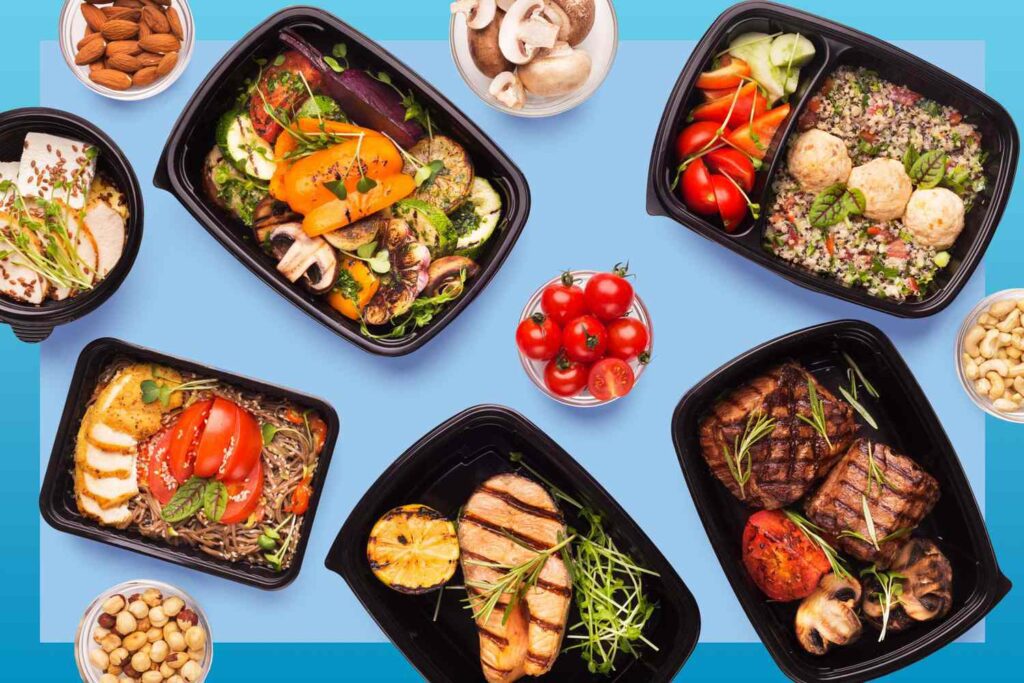The Science of Being Physically Fit: Tips for Success
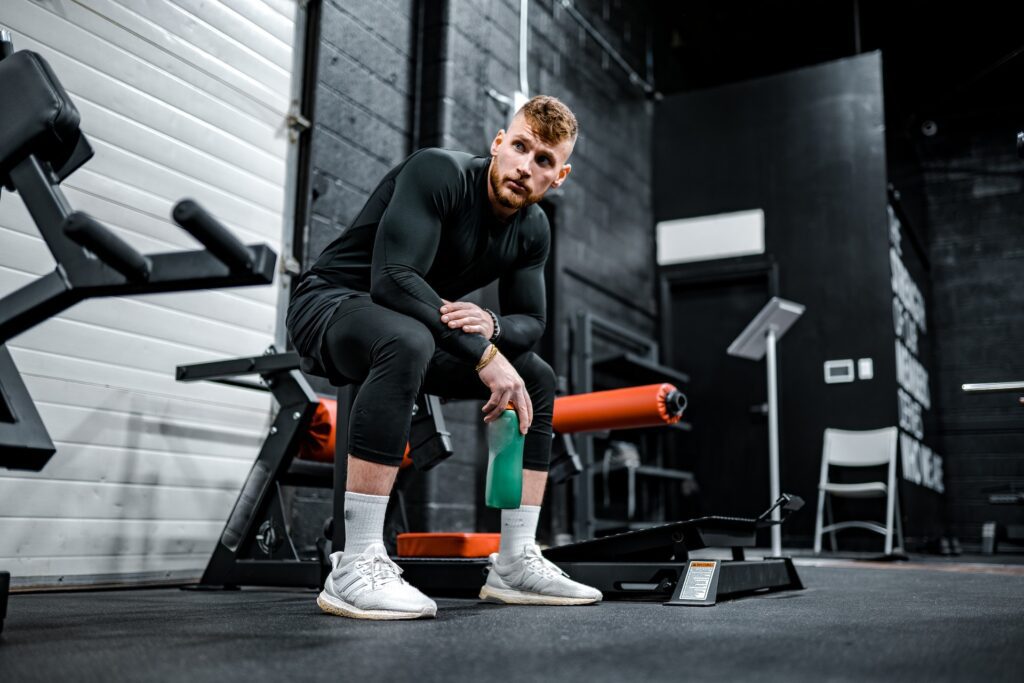
The Journey to Becoming Physically Fit
Are you ready to embark on an exhilarating adventure towards a healthier, more vibrant you? If so, you’ve come to the right place. Welcome to “Fitness and Wellness Corner,” where we’re about to dive headfirst into the exhilarating world of becoming physically fit.
In this article, we’ll be your trusty guides, unveiling the secrets to unlock your potential and transform your lifestyle. We’ve broken down the journey into five easy-to-follow steps that will not only make your path to physical fitness a breeze but also ensure you have a blast along the way. Get ready to sweat, smile, and see remarkable changes in your body and mind!
Here’s a sneak peek at the exciting steps we’ll be covering:
Understanding the Concept of Physical Fitness: We’ll start by breaking down what it truly means to be physically fit. Hint: It’s not just about pumping iron or running marathons.
The Science Behind It: Let’s add some solid ground to our journey with statistics, studies, and expert quotes that highlight the importance of physical fitness.
High-Octane Workouts with HIIT: Ever heard of High-Intensity Interval Training (HIIT)? We’ll explore its benefits and how it can supercharge your fitness journey. Benefits of High-Intensity Interval Training (HIIT).
Muscle Building Magic: We’ve got the ultimate guide to building lean muscle mass that’ll leave you looking and feeling stronger than ever. Guide to Building Lean Muscle Mass.
Fueling Your Success: You can’t out-train a bad diet, right? We’ll introduce you to healthy meal planning for beginners to keep your body nourished and energized. Healthy Meal Planning for Beginners.
Shedding Pounds with Cardio: If weight loss is your goal, we’ll discuss the most effective cardiovascular workouts to help you achieve it. Cardiovascular Workouts for Weight Loss
But that’s not all! Along the way, we’ll sprinkle in insights from studies, inspiring quotes, and expert references to keep you informed and motivated. So, fasten your seatbelt, because this journey promises to be an exhilarating ride to the best version of yourself!
Ready to take that first step? Let’s dive in!

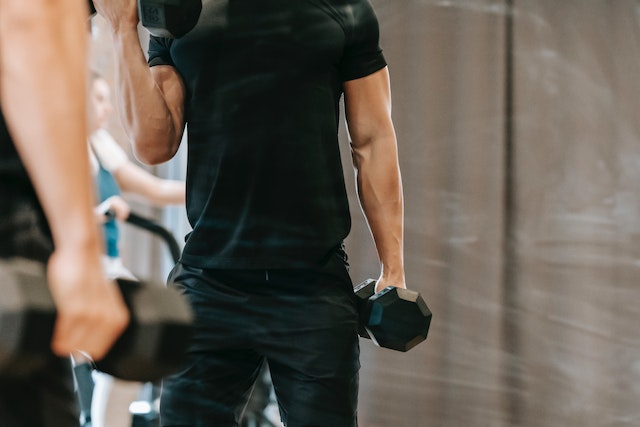
Understanding the Concept of Physical Fitness
Physical fitness, often mentioned and highly sought after, is not just about having bulging muscles or running marathons like an Olympian. It’s a comprehensive state of well-being that encompasses your body, mind, and overall health. Think of it as the key to a happier, healthier, and more vibrant life.
At its core, physical fitness is the harmony between various components that contribute to your overall well-being. Let’s break down these components:
- Cardiovascular Endurance: This is all about the health of your heart and lungs. It enables you to sustain physical activity for extended periods. A strong cardiovascular system means you can climb stairs without getting out of breath and enjoy outdoor activities without feeling winded.
- Muscular Strength: This component is about the power your muscles generate. It allows you to lift, push, and carry objects effortlessly. While you don’t need to bench-press a car, being strong enough to handle daily tasks without strain is essential.
- Muscular Endurance: This focuses on the ability of your muscles to perform repetitive tasks without fatigue. It’s essential for activities like gardening, playing sports, or even maintaining good posture throughout the day.
- Flexibility: Flexibility refers to your range of motion around your joints. It’s crucial for preventing injuries and maintaining a comfortable, pain-free life. Imagine being able to tie your shoelaces without contortions.
- Body Composition: This involves the ratio of fat to muscle in your body. Achieving a healthy body composition means having an appropriate amount of muscle and minimal fat. It’s not about appearance alone but also about overall health.
- Balance and Coordination: Balance and coordination are often overlooked but vital components of physical fitness. They help prevent falls and injuries, especially as we age.
- Mental Well-being: Physical fitness isn’t just about the body; it’s about the mind too. Regular exercise releases endorphins, those wonderful “feel-good” hormones that reduce stress and boost mood. A healthy body is often accompanied by a healthy mind.
Now, here’s the beauty of physical fitness: it’s adaptable. You don’t need to become a pro athlete overnight. It’s about setting achievable goals that align with your current fitness level and gradually improving from there. Whether you’re starting from scratch or aiming for new heights, physical fitness is a journey, and it’s never too late to begin.
As we progress through this article, we’ll explore how you can enhance each of these components, backed by scientific studies and expert insights. It’s time to take control of your physical fitness and embark on a journey that will reward you with vitality, confidence, and a higher quality of life.
The Science Behind Being Physically Fit
Have you ever wondered why physical fitness is more than just a trend but rather a fundamental aspect of a healthy life? To truly grasp the significance, we’re going to explore the science that underpins the quest to become physically fit.
- The Link Between Physical Fitness and Health: Research consistently demonstrates the profound connection between physical fitness and overall health. A study published in the American Journal of Lifestyle Medicine found that individuals who maintain a high level of physical fitness throughout their lives are at a significantly lower risk of chronic diseases such as heart disease, diabetes, and hypertension. But it goes beyond disease prevention. Physical fitness is a cornerstone of longevity. According to the National Institute on Aging, regular physical activity can add years to your life. Each session at the gym or brisk walk in the park isn’t just about burning calories; it’s an investment in your future well-being.
- Physical Fitness and Mental Health: The relationship between physical fitness and mental health is equally compelling. A study conducted by Harvard Medical School discovered that regular exercise, including aerobic activities like running and swimming, can reduce symptoms of depression and anxiety. This isn’t merely anecdotal; it’s grounded in neuroscience. Exercise triggers the release of endorphins, those remarkable neurotransmitters responsible for feelings of euphoria and well-being.
- The Role of Nutrition: While we often associate physical fitness with exercise, nutrition plays an equally pivotal role. Research from the National Center for Biotechnology Information reveals that proper nutrition is essential for muscle recovery and growth. A diet rich in protein, vitamins, and minerals is a fundamental building block of physical fitness.

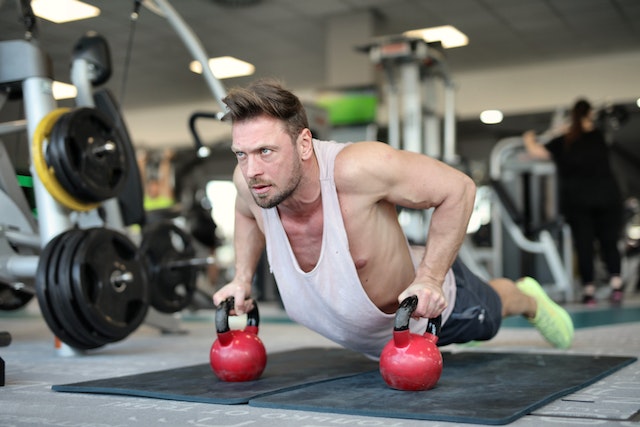
High-Octane Workouts with HIIT: Unleash Your Full Potential
Are you ready to supercharge your journey to becoming physically fit? Look no further than High-Intensity Interval Training, or HIIT for short. HIIT is not just a workout; it’s a game-changer that can take your fitness to new heights. In this section, we’ll explore the exhilarating world of HIIT and how it can transform your fitness regimen.
- What is HIIT, and Why Does It Matter?: HIIT is a fitness approach that combines short bursts of intense exercise with brief periods of rest or low-intensity recovery. The magic of HIIT lies in its efficiency. A study published in the Journal of Obesity found that HIIT workouts can burn more calories in a shorter time compared to traditional moderate-intensity exercise. This makes it an excellent choice for those with busy schedules.
- The Science Behind HIIT: Understanding the science behind HIIT is crucial to appreciating its effectiveness. During high-intensity intervals, your body experiences an oxygen deficit. This oxygen debt is what leads to the afterburn effect, scientifically known as excess post-exercise oxygen consumption (EPOC). In simpler terms, your body continues to burn calories even after your workout is over, which is fantastic for fat loss.
- HIIT vs. Steady-State Cardio: While steady-state cardio, like jogging, has its benefits, HIIT takes it up a notch. Research from the American College of Sports Medicine shows that HIIT not only burns more calories but also improves cardiovascular fitness more effectively than steady-state cardio. It’s like getting a two-for-one deal on your fitness goals.
- Variety Keeps It Exciting: One of the most significant advantages of HIIT is its adaptability. You can customize HIIT workouts to suit your preferences and fitness level. Whether you prefer sprinting, cycling, jumping rope, or bodyweight exercises, HIIT can accommodate your choices. This variety not only keeps your workouts exciting but also challenges your body in new ways, preventing plateaus.
- Incorporating HIIT Into Your Routine: Ready to give HIIT a try? We’ve got you covered. In our blog, you’ll find a dedicated article on the Benefits of High-Intensity Interval Training (HIIT) with detailed workout routines and tips to get you started. Make sure to check it out to make the most of this high-octane fitness method.
Muscle Building Magic: Sculpting Your Way to Health and Fitness
When we talk about health and fitness, we can’t overlook the incredible benefits of building lean muscle mass. It’s not just about aesthetics; it’s about boosting your metabolism, enhancing your strength, and fortifying your overall well-being. In this section, we’ll dive into the science and art of muscle building.
- The Importance of Lean Muscle: Muscles are like the engine of your body. The more muscle mass you have, the more calories your body burns, even at rest. This means that building lean muscle can help you achieve and maintain a healthy weight. A study published in the journal Obesity found that individuals with higher muscle mass have a more efficient metabolism, which can be crucial for long-term health and fitness.
- Resistance Training: The Key to Muscle Growth: To build lean muscle, resistance training is your go-to strategy. This includes activities like weightlifting, bodyweight exercises, and resistance bands. Resistance training creates tiny tears in your muscle fibers during workouts. When these tears heal, your muscles grow stronger and more defined. This process is backed by extensive research, which shows that resistance training is effective for muscle building and improving overall health.
- Balancing Nutrition and Muscle Building: Nutrition is the other vital component of muscle building. Protein is the star player in this arena. Your muscles need an adequate supply of protein to repair and grow after each workout. Studies published in the Journal of the International Society of Sports Nutrition emphasize the role of protein in muscle protein synthesis.
- Customizing Your Muscle-Building Plan: The beauty of muscle building is its adaptability. You can tailor your resistance training routine to your goals, whether it’s bulking up, toning, or simply maintaining your current physique. It’s all about finding the right balance between intensity, volume, and recovery.
- Exploring Further Resources: For a deeper dive into the world of muscle building and health and fitness, we’ve got a comprehensive guide on our blog: Guide to Building Lean Muscle Mass. This guide offers detailed workout plans, nutrition tips, and expert advice to help you sculpt your dream physique while enhancing your overall health.
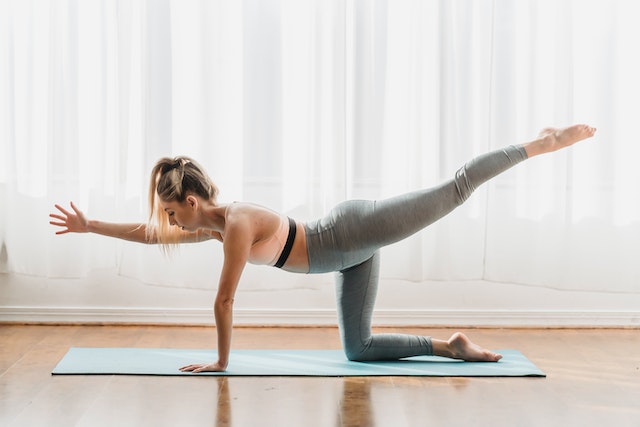
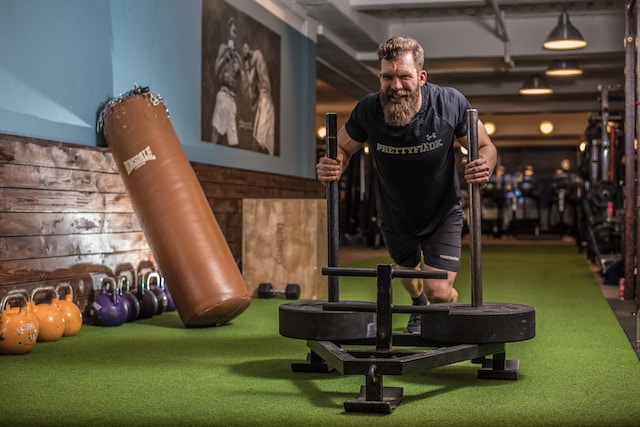
Fueling Your Success: Healthy Meal Planning for Beginners
Becoming physically fit isn’t solely about exercise; it’s also about what you put on your plate. Nutrition is a cornerstone of your fitness journey, and in this section, we’ll explore the art of healthy meal planning for beginners.
- The Power of Nutrition: Nutrition plays a pivotal role in achieving and maintaining physical fitness. Properly fueling your body ensures you have the energy, nutrients, and stamina to crush your workouts and thrive in everyday life. Moreover, it aids in muscle recovery and repair, making it an indispensable component of your fitness regime.
- Balanced Meals for Optimal Results: Creating balanced meals is key to health and fitness. Your plate should be a canvas of colorful, nutrient-rich foods. A study published in the Journal of Nutrition and Metabolism highlights that balanced meals can improve overall health, including body composition and weight management.
- Protein for Muscle Building: Protein is often dubbed the building block of muscles, and for a good reason. It aids in muscle recovery and growth. Incorporating lean sources of protein like chicken, fish, tofu, or legumes into your meals is essential for those seeking to become physically fit.
- Carbohydrates for Energy: Carbohydrates are your body’s primary source of energy. Opt for complex carbohydrates like whole grains, fruits, and vegetables to sustain your energy levels throughout the day and during workouts. A well-fueled body can achieve more during exercise, ultimately contributing to your fitness goals.
- Healthy Fats for Overall Health: Don’t shy away from fats; they are essential for various bodily functions. However, focus on healthy fats such as avocados, nuts, and olive oil. These fats support heart health and can be part of a balanced diet that promotes physical fitness.
- Meal Planning Made Easy: For beginners, meal planning might seem daunting, but it doesn’t have to be. Our blog offers a comprehensive guide on Healthy Meal Planning for Beginners, which provides step-by-step instructions, sample meal plans, and tips to kickstart your journey toward better nutrition.
Shedding Pounds with Cardio: Cardiovascular Workouts for Weight Loss
For those looking to trim down and enhance their physical fitness, cardiovascular workouts are a powerful tool. In this section, we’ll explore the world of cardio exercises and how they can contribute to your journey to becoming physically fit.
- The Role of Cardio in Weight Loss: Cardiovascular workouts, often referred to as cardio, are exercises that elevate your heart rate and increase oxygen circulation. These workouts are renowned for their effectiveness in burning calories, making them a go-to choice for weight loss. A study published in the Journal of Obesity confirms that cardio exercises are highly efficient for shedding pounds.
- Variety Keeps It Engaging: The world of cardio is vast and varied. Whether you enjoy brisk walking, jogging, cycling, swimming, or dancing, there’s a cardio exercise to suit your preferences. This variety not only makes your workouts enjoyable but also helps you stay consistent—a key factor in achieving lasting weight loss and physical fitness.
- The Science of Fat Burning: Cardio workouts primarily target stored fat as a source of energy. During exercise, your body taps into its fat stores to fuel your efforts. As a result, consistent cardio training can lead to a reduction in body fat percentage. This is supported by research from the American Journal of Physiology, which highlights the fat-burning effects of cardio exercises.
- Balancing Cardio with Other Components: While cardio is excellent for calorie burn, remember that a well-rounded fitness routine includes other components we’ve discussed, such as resistance training and balanced nutrition. These elements complement each other, contributing to a holistic approach to physical fitness.
- Discover More Resources: To delve deeper into the world of cardio workouts for weight loss, we’ve prepared an extensive article on our blog: Cardiovascular Workouts for Weight Loss. This resource includes workout ideas, tips for maximizing your cardio sessions, and guidance on incorporating cardio into your fitness plan.
Conclusion
Congratulations, fitness enthusiasts! You’ve just embarked on a thrilling journey toward becoming physically fit, and what an adventure it’s been! We’ve explored the science behind physical fitness, supercharged your workouts with HIIT, delved into muscle-building magic, and embraced the power of healthy eating. Plus, we’ve shed pounds with heart-pumping cardio. But wait, there’s more!
Remember, the path to being “physically fit” isn’t just a destination—it’s a lifestyle. It’s about feeling fantastic in your skin, having boundless energy, and living life to the fullest. And guess what? You’ve got the tools and knowledge now to make it happen.
So, what’s the secret sauce? It’s consistency, my friends! Keep showing up for those workouts, keep making mindful food choices, and keep pushing your limits. Rome wasn’t built in a day, and neither is a physically fit you. But with each step, each healthy meal, and each sweat-soaked workout, you’re sculpting a stronger, more vibrant version of yourself.
And here’s the best part: you’re not alone on this journey. We’ve got a treasure trove of resources on our blog to guide you, from detailed workout plans to nutrition tips. Explore them, try new things, and remember, every small victory counts!
So, let’s wrap it up with one simple, motivating message: You’ve got this! Keep striving for your “physically fit” best, and remember that the only limit is the one you set for yourself. Now, go out there and own your journey to physical fitness. Your future self will thank you, and we’ll be cheering you on every step of the way. Keep moving, keep nourishing, and keep believing in yourself—you’ve got all the ingredients for success!
Frequently Asked Questions (FAQs) Your Guide to Physical Fitness
Being physically fit means having a state of well-being where you’re healthy, strong, and able to perform physical activities with ease. It involves a combination of factors, including cardiovascular endurance, muscular strength, flexibility, and a healthy body composition.
Absolutely! While the gym can be a great place to work on your fitness, it’s not the only option. You can become physically fit by engaging in various activities like outdoor sports, home workouts, or even dancing. The key is finding activities you enjoy and staying consistent.
The American Heart Association recommends at least 150 minutes of moderate-intensity aerobic exercise or 75 minutes of vigorous-intensity aerobic exercise per week, along with muscle-strengthening activities on two or more days a week. However, the ideal frequency may vary based on individual goals and fitness levels.
Yes, diet plays a significant role in physical fitness. Proper nutrition fuels your body for workouts, aids in muscle recovery, and supports overall health. A balanced diet rich in protein, complex carbohydrates, healthy fats, and plenty of fruits and vegetables is essential for reaching your fitness goals.
Cardiovascular exercises like jogging, cycling, swimming, and HIIT workouts are highly effective for weight loss. These activities elevate your heart rate and burn calories, making them great choices for shedding pounds.
Yes, you can build muscle without lifting heavy weights. Bodyweight exercises, resistance bands, and lighter weights with higher repetitions can also stimulate muscle growth. The key is progressive overload, gradually increasing the challenge to your muscles over time.
